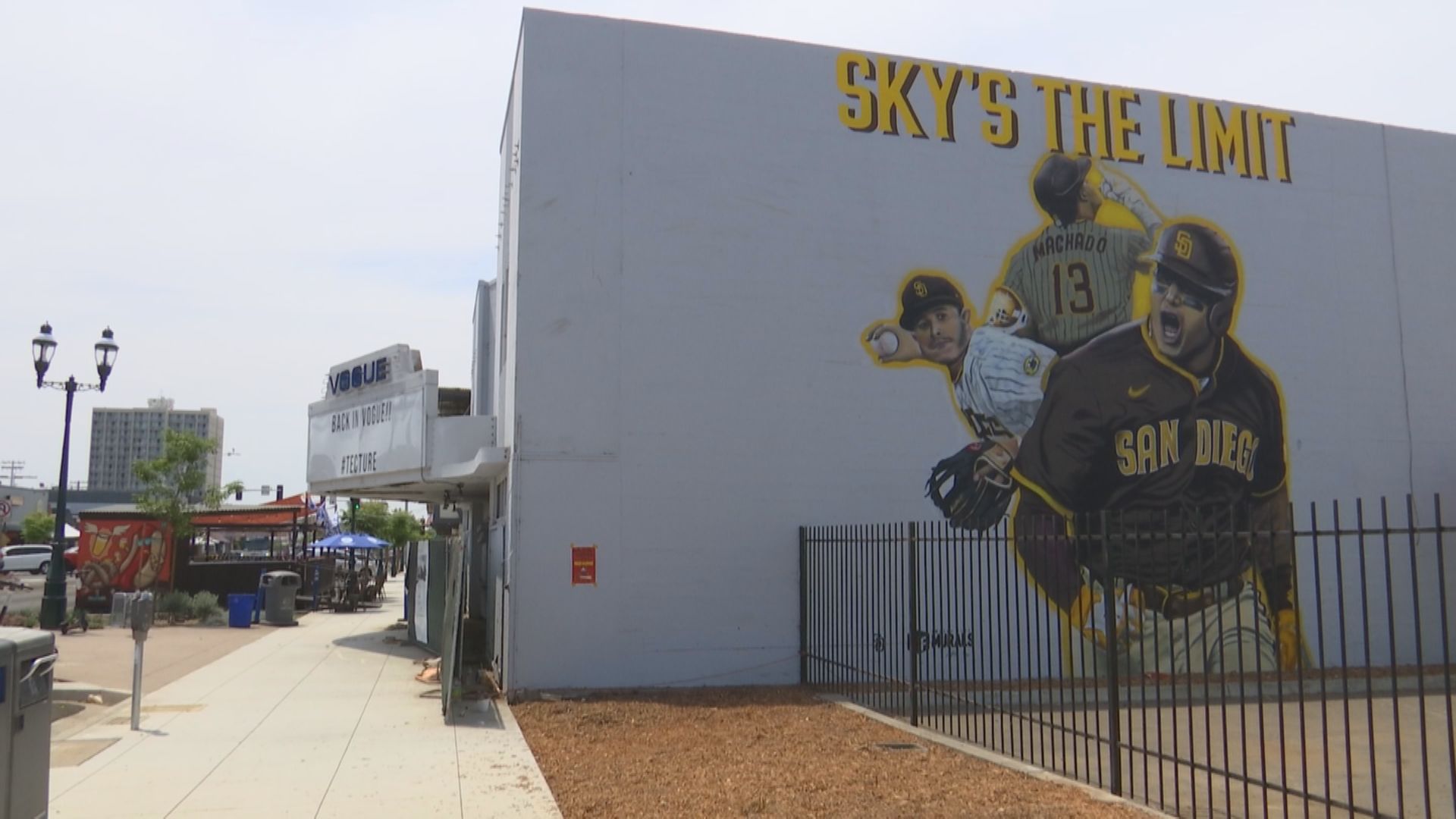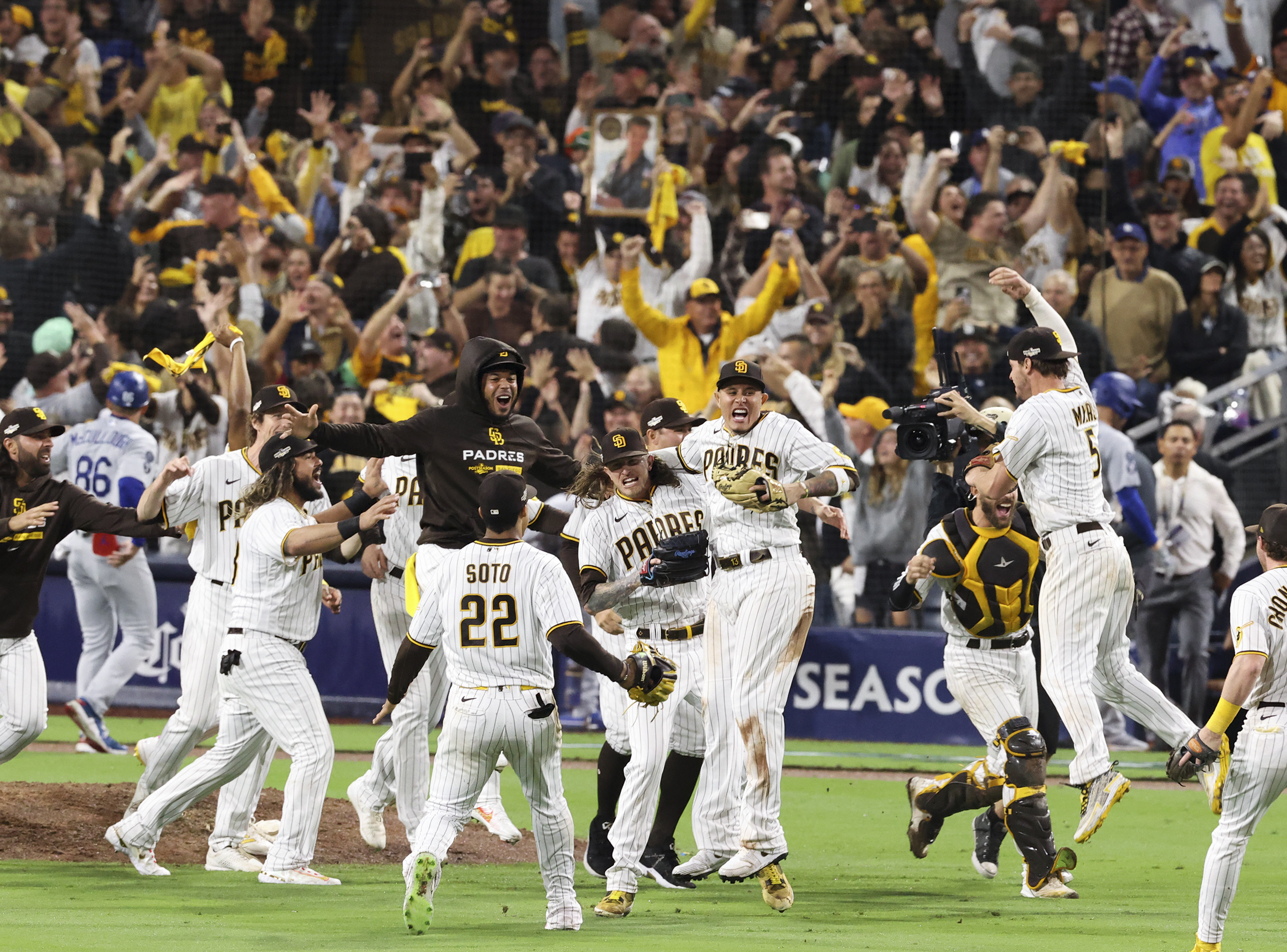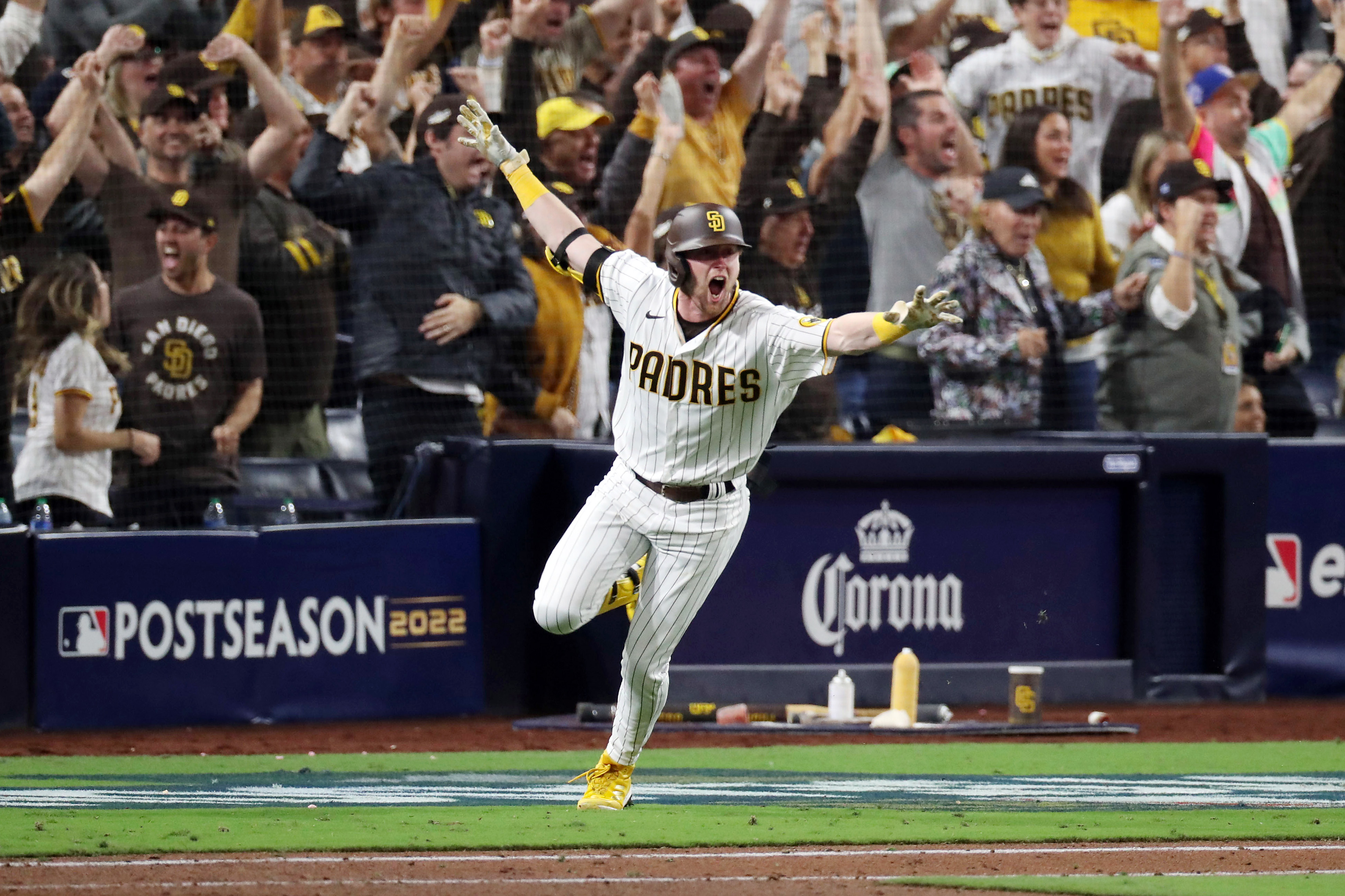The star of a moment so short it only lasted a few minutes during Game 2 of the National League Division Series (NLDS) has become the biggest rallying cry for a team that has long been considered an underdog. Now, San Diego Padres fans are hoping to fly with the "rally goose" all the way through the postseason.
What happened to the goose at Dodgers Stadium?
Like any newly viral star, the greater white-fronted goose didn't expect its rise in popularity when it crash-landed in front of more than 50,000 fans at Dodgers Stadium on Oct. 12. It didn't expect to be there at all.
The goose was likely confused and separated from a flock on their way from the Canadian tundra to the warmer Mexico coastline for the winter, according to Travis Longcore, President of the Los Angeles Audubon Society and professor at UCLA's Institute of the Environment and Sustainability.
Get top local stories in San Diego delivered to you every morning. Sign up for NBC San Diego's News Headlines newsletter.
"Nocturnal migrants... can be disoriented by lights, and once a bird gets into the sort of zone of influence of a light, it's very difficult to leave that," Longcore said. "In this instance, lights, disorientation, it is also a bit noisy in the stadium, and so it's going to have a lot of sort of sensory overload once it gets in that environment."
Ground crew members came onto the field with a trash can to scoop up the bird and carry it out of sight. We don't know exactly what happened from there but the Los Angeles Dodgers say it was safely released shortly after the disruption.
Longcore said it's impossible to know the condition of the goose without getting a closer look but if, as the Dodgers say, it was released on its own accord, the bird was likely uninjured, just disoriented.
"In this instance, they got it out of the light, they got it outside and released it, and it went under its own power at that point," Longcore said. "And, that's probably the best outcome for it."
Geese have a good sense of direction. After all, the white-fronted variety travel some six thousand miles to escape the cold. So it's likely the star is back with its flock and headed for a well-deserved vacation in Mexico.
They're a little bit smaller [as far] as geese go.
LA Audobon Society President Travis Longcore describes the greater white-fronted goose
But I've heard colleagues say that pound-for-pound,
they're just as tough as any big goose
in an unwitting metaphor for the San Diego Padres
What's with the San Diego Padres and the goose?
Here in San Diego, though, the rally goose lives on. It is credited with swooping in at a pivotal moment for the Padres. After the goose landed on the field, the Friars went one, two, three to knock out the revered Dodgers from World Series contention -- a feat many doubted.
So was the goose an omen? Maybe, maybe not. But it was, at least, fitting.
The greater white-fronted goose is "a little bit smaller [as far] as geese go. But I've heard colleagues say that pound-for-pound, they're just as tough as any big goose," said Longcore, an admitted sports nonfan who had likely unintentionally given the perfect metaphor for the ever-fighting Pads.
At the Padres' last four home games, the goose has taken the form of meme signs, shirts and hats, stuffed animals, and a full costume for one enthusiastic attendee. A mural was painted overnight in Chula Vista in tribute to the "San Diegooose!"
Photos: How The San Diego Padres and the Rally Goose Became Birds of a Feather
Even the Padres organization itself has fully embraced its unofficial mascot. The "Talk to Me, Goose," a special edition alcoholic beverage sold at the stadium pays homage. A hype video set to techno beats with flashy overlays and pulsating "RALLY GOOSE" text highlights the moment their savior came down from above.
And, a goose figurine has been sitting with the Padres in the dugout at Petco Park. It was even part of the on-field celebration when the team won the NLDS for the first time in decades, carried by Jorge Alfaro and Manny Machado. Is it going on the road, too?
What we do know is this: With just three wins against the Philadelphia Phillies separating San Diego's longest-running sports team from the World Series for the first time since 1998, fans won't let go of the rally goose anytime soon.
If people can take a little inspiration out of [this moment]
Travis Loncore, President of the LA Audobon Society
and also turn some attention to caring about geese
and our native species, that would be great."
The Future of the Greater White-Fronted Goose
But, it's not all fun and baseball games for the actual species behind the mascot, the greater white-fronted goose.
Like other migratory birds, the range of these geese is largely being affected by climate change and other human-made challenges. It's not unusual now for a white-fronted goose to be found around Dodgers Stadium in Los Angeles, Longcore said, but it could be in the future.
The Audubon Society has created models to project how the waterfowl's migration pattern would shift as temperatures rise. White-fronted geese would be far less likely to be found in Southern California with just a 1.5-degree celsius change, which could happen in the next 5 years, according to the United Nations.
Also, many of the wetland areas in the Central Valley these geese used as stopping points during their migratory journey have been drained for agriculture, Longcore said. And, those remaining are in drought.
Migration "is always fascinating to me in how much it connects us in the middle of the city to the remotest areas of Alaska, that there are species that are making that route," Longcore said. "If people can take a little inspiration out of [this moment] and also turn some attention to caring about geese and our native species, that would be great."
Light pollution also plays a large effect on nocturnal migratory birds, like the white-fronted goose. Longcore said there are changes individuals can make to reduce light pollution and help migratory birds.
"There's a lot of easy things that we can do that don't require anything other than what your parents maybe taught you growing up, which is turning the lights off when you don't need them, point the light where you need it, don't waste that extra energy by lighting the undersides of birds and airplanes."
Padres Post-Season
Migration is one of the most vulnerable parts of the life cycle for any bird species, and the population of migratory birds has been in decline since the 1970s, Longcore said.
"We do have ways to to fix that. We know things to do. We just have to do them."
Where to see the white-fronted goose in San Diego
Greater white-fronted geese will only be spotted in San Diego County in the winter when the migratory bird travels south to Mexico to escape the cold tundra of Canada.
The birds rarely stop for long in San Diego, but your best bet at a sighting are near lakes, lagoons and bays in the region -- from Oceanside to Rancho Penasquitos, San Diego Bay, Lake Murray and Santee Lakes, said Jeanine, a birder and a volunteer with San Diego Audubon Society.
There has even been one greater white-fronted goose hanging around Cuyamaca State Park for more than a year, Jeanine said. They're not sure why this one in particular stays but Jeanine has a theory we can get behind.
"Every once in a while they decide the food is good, the weather is nice and they stay."
Geese and San Diego. Birds of a feather.




